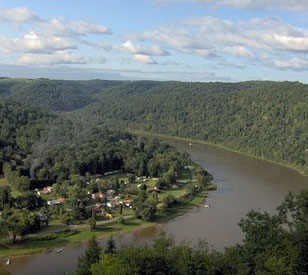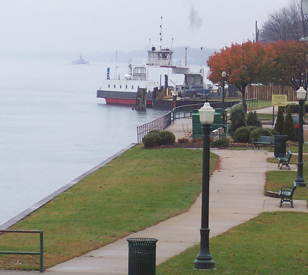Source Water Monitoring

Rivers, lakes, reservoirs, springs and groundwater can all act as source water for public supply networks and household use. Protecting water resources from contaminants and delivering clean water is a primary concern for water resource managers and treatment plants. Real-time water quality measurements, especially at raw water intake points, help to ensure that the water being supplied to public networks is safe for consumption.
Source Water

Typical Source Water Monitoring System
Ensuring safe and clean water supplies are delivered starts with knowing the water quality at the intake. Source water monitoring stations are installed near or at source water locations to provide the background data necessary to implement the best water treatment regimes.
The X3 data logger is the central component of NexSens automated source water monitoring systems. It is compatible with a wide range of sensor types and manufacturers and can transmit real-time data to the WQData LIVE web datacenter via 4G LTE cellular or satellite telemetry. WQData LIVE has a suite of data management tools and sends alerts via email or SMS text message when critical thresholds are exceeded.
Flexible mounting options for the X3 simplify installation on existing infrastructure or inside water treatment facilities. Power is supplied with SP-series solar power packs or connection to mains power.
NexSens source water monitoring systems typically incorporate multiparameter water quality sondes including those from YSI, Hydrolab, Eureka, In-situ and others. A wide range of industry-standard sensors are compatible for measurement of temperature, pH, conductivity, oxygen levels, nutrients, presence of algae and more.
Contact a NexSens Applications Engineer today to discuss your source water monitoring application.

Case Studies
Organics Detection System
Seventy tons of toxic carbon tetrachloride made its way down the Kanawha and Ohio Rivers in February of 1977. The spill raised tremendous concern over how well the bevy of recently instated environmental laws were actually being enforced. Citizens had no way of knowing for sure whether such harmful compounds would be entering their drinking water. Residents of the affected area for the most part only learned of the hazardous spill after the worst of it had already passed downstream. It appeared as if one of the four operations authorized to make carbon tet discharges on the two rivers had illegally exceeded its NPDES permit.
Read MoreDrinking Water Early Warning System
Drinking water supplies in the United States are an extremely valuable national asset and are vital to our country’s survival. During the past few years, these resources have been thrust into the national spotlight as government agencies have placed an increased emphasis on their surveillance and protection. Prompted by this initiative to monitor drinking water quality, the Ohio River Valley Water Sanitation Commission recently completed the design and implementation of an early warning detection and water quality monitoring system for the Allegheny and Monongahela rivers in Pennsylvania.
Read MoreSt. Clair & Detroit River Monitoring
According to the Michigan Department of Environmental Quality (DEQ), more than 4 million people rely on the Huron-to-Erie corridor for their drinking water. This corridor encompasses the St. Clair River and the Detroit River. Both of these rivers have been subjected to various contaminant spills over the years. These include substances like municipal and industrial discharges, contaminated sediments and combined sewer overflow materials. As a result, the St. Clair River is listed as an Area of Concern.
Read More







